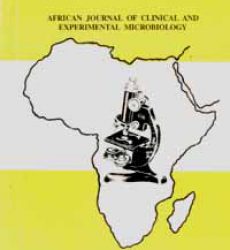Aboagye, I. F.
Department of Animal Biology and Conservation Science, University of Ghana, P. O. Box LG 67, Legon-Accra, Ghana Correspondence to: iaboagye@ug.edu.gh; +233 249874408
Abstract:
The control of Buruli ulcer (BU), a debilitating neglected tropical disease, is hampered by the inadequate understanding of the mode of transmission of its causative agent, Mycobacterium ulcerans (M. ulcerans). The DNA of M. ulcerans has been detected in some living organisms and non-living environmental samples of both aquatic and terrestrial sources. However, it is unclear whether the identified organisms support in vivo multiplication of the bacterium or play any role in its transmission. This paper identifies hosts of M. ulcerans, reviews progress made in unravelling the exact mode of transmission of M. ulcerans and identifies research gaps in this aspect of BU epidemiology. Using the search terms, ‘niche, Mycobacterium ulcerans’ and ‘mode of transmission, Mycobacterium ulcerans’ as well as defined inclusion criteria, information was obtained from the PubMed database and reviewed to assess their importance to the research question. Aquatic bugs of the genera Appasus and Diplonychus as well as Naucoris cimicoides and possums were identified to support in vivo multiplication of the bacterium. Bite of M. ulcerans contaminated Aedes notoscriptus, bite of aquatic bugs harboring or contaminated with M. ulcerans, and M. ulcerans contaminated skin-puncturing materials present in nature create opportunity for its transmission and infection. Appropriate protective measures may be useful to reduce the risk of exposure to M. ulcerans in BU endemic areas, and incorporation of trophic interactions of aquatic organisms known to support in vivo multiplication of M. ulcerans is needed in future research for better understanding of the spread of M. ulcerans in nature.
Keywords: Mycobacterium ulcerans, niche, transmission Continue reading “Hosts and transmission of Mycobacterium ulcerans: a systematic review”

